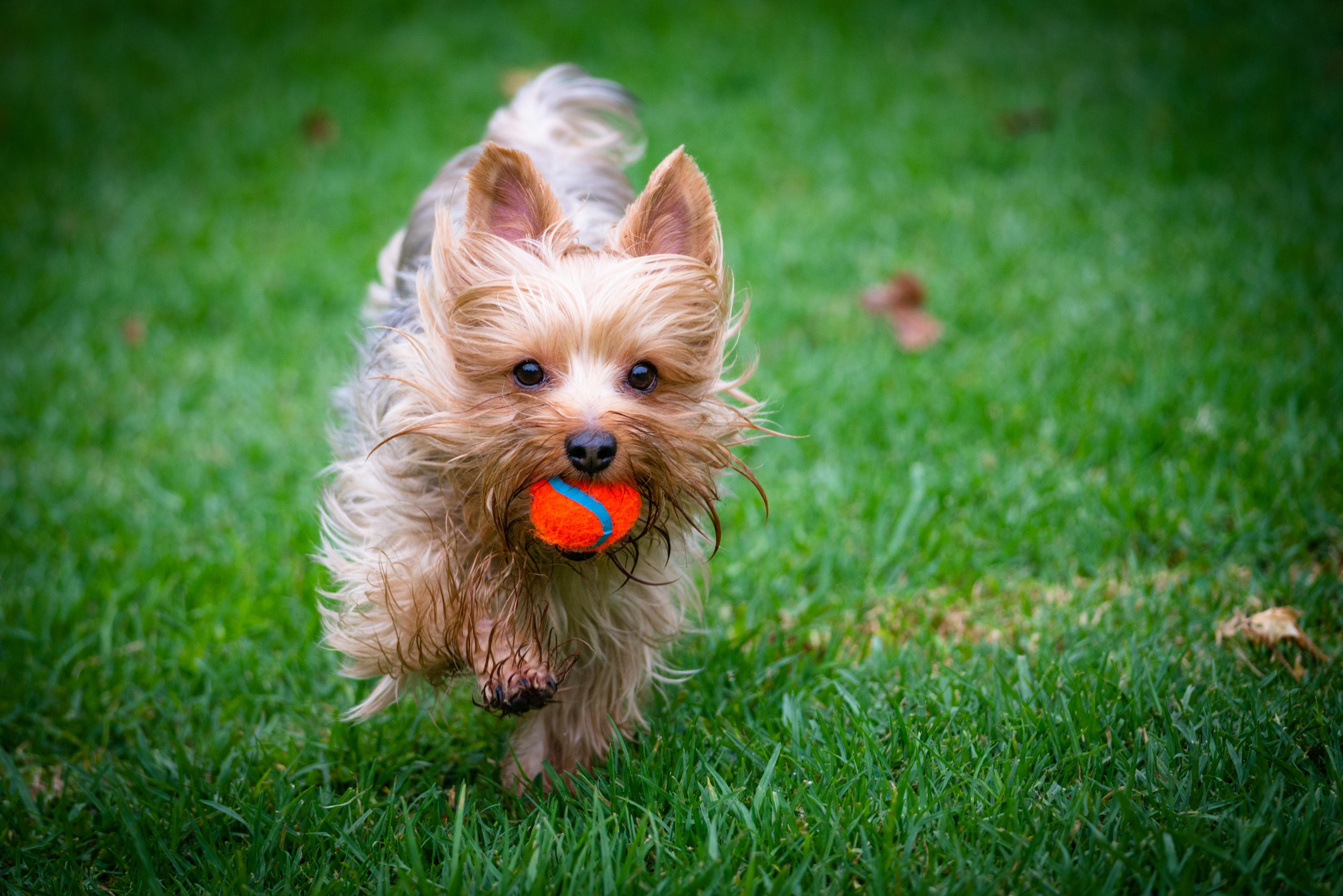Dogs have been retrieving many things for us since ancient times. Earlier, it used to be fish or any other game that humans used to hunt. Fast forward to today and we’ve made them fetch all those fancy toys. (not very sure if this is an upgrade). But not every dog is born with an innate desire to retrieve.
Picture this: ancient humans, clad in animal skins, standing in front of their caves, tossing bones for their canine companions. "Fetch!" they would have shouted with all the enthusiasm, only to have their four-legged friends look at them like, "You threw it, you fetch it." Fast forward to today, and not much has changed. And looks like your dog is not much of a fetch aficionado as well. But we understand why you would want them to learn to fetch. It serves as a good exercise and bonding time. Plus, you can impress the ladies in the park by showing off your dog’s skills!
Whatever your reason may be – Let’s get started! (2)
Start in a small space like a fenced backyard or a hallway. This helps in limiting the distractions for your dog.
Pick a toy that’s easy to grab by their teeth and the one they love. It’ll make things easier.
Hold the toy out and ask your dog to take it. Wait for 3-5 seconds and then ask your dog to drop it. This technique is called ‘backchaining’. It’s when you teach the last step of the process first.) Your dog may take some time to learn the command ‘drop it’. Holding a treat in front of the nose can help entice them to drop the toy. Use treats to reward the dog after dropping the ball.
To teach your dog to master the art of dropping the toy - hold out the treat hand in an empty fist and give the "drop it" command. Open your hand and let the dog see an empty hand. But then take a treat out of your pocket to reward your dog. Overtime, your dog won’t need treats to drop the ball.
Gradually, increase the amount of time between your dog taking the toy and you saying ‘drop it’.
Next up is the ‘bait and switch’ method. This is for teaching your dog how to fetch the toy and bring it back to you. Take two toys this time. Throw the first one and let your dog chase it. Once it grabs it, call your dog and throw the second toy in the opposite direction. Your dog will drop the first one and chase the next one. Before that, you will have to pick up the first toy and then repeat the sequence. Don’t forget to call your dog’s name here.
And finally, we now need to eliminate the second toy and make sure the dog brings the toy back to you. Start by throwing the first toy. Call your dog once it grabs it. But this time don’t throw the second one. Let your dog come back to you with the toy. Once it does, give the command ‘drop it’. You can then throw the second toy and repeat.
Keep repeating until your dog doesn’t need the second toy as a motivation to bring the first one back.
Once done, the last step is the most crucial one – Pat your back! You’ve successfully unlocked level 5 with your buddy.
Is it Too Late to Teach My Dog Fetch?
If Colonel Harland Sanders can start the world-famous brand KFC at the age of 62, your dog surely can learn to fetch at any age. Just that an older dog may take a little more time to learn. Energy levels may also be comparatively lower when the dog is older. But senior dogs can learn the game of obedience just fine. (1)
Do Dogs Learn Fetch Naturally?
Fetching may not come as an instinct to all dogs. Retrievers like the Labrador and Golden Retriever for example are natural at this game. They were bred for this very reason. Even breeds like Poodle, German Shepherd, Australian Shepherd, etc. have fetching and retrieving in their genes. Having said that, doesn’t mean that other breeds cannot learn fetch. A good technique (which we’ve already listed for you above) + patience + love = a good learner. (1)
Is Fetch Stressful for Dogs?
Fetch can be an excellent way for physical and mental stimulation for your dog along with a great opportunity for bonding with the owner. However, repeatedly sprinting, leaping in the air, and changing direction can put a tremendous amount of stress on your dog’s joints. Excessive stress on the joints can result in arthritis or hip dysplasia. (3)
In some cases, the dog can also become compulsive for playing fetch. It can extend to the point where they would not want to play anything else and would keep playing even if they are exhausted or hurt. This can be bad for the dog. (3)
It is recommended that you introduce multiple games and activities for the physical and mental stimulation of your dog.
More About Spot Pet Insurance
Games like fetch, especially when played outside, can pose a risk of an injury. And as mentioned above, at times, it can also lead to arthritis and hip dysplasia. At such a time, when you’re busy taking care of your buddy, we’ll take care of all the finances needed for the treatment. With pet health insurance you can save up to 90% of the treatment costs. At Spot Pet, there are many more benefits available for you.
Spot accident and illness plans can be used with any licensed vet in Canada or the U.S. Whether you are home, or traveling to the U.S., veterinary services your pet receives for the diagnosis, treatment, or management of covered conditions can be eligible for reimbursement. Spot’s accident and illness plans can help cover a variety of conditions including broken bones, lacerations, aggression, kidney disease, diabetes, and more. With the addition of Wellness Riders for an extra cost, you can also receive reimbursements for wellness exams, certain vaccinations, dental cleanings, and more.
Learn more about dog insurance or get a free quote!
Lastly, whether you’re working with a natural-born retriever or a dog that would rather watch you do the fetching, remember that the journey is half the fun. With a little humor, a lot of treats, and plenty of patience, you’ll soon have your dog chasing down toys like a pro. Happy fetching!

With 10 years of experience as a pet parent, I aim to empower pet owners with insights into pet insurance and maintaining their pet's well-being. I aspire to be a trusted source, combining knowledge with a commitment to the welfare of our beloved pets.
Teaching a dog to play fetch. (2023, December 8). Yarrah. https://www.yarrah.com/en/blog/teaching-a-dog-to-play-fetch/
2. MasterClass. (n.d.). How to teach your dog to fetch in 5 steps - 2024 - MasterClass. https://www.masterclass.com/articles/how-to-teach-your-dog-to-fetch
3. Helton, B. (2024, June 21). Is Fetch Bad for My Dog? Experts Explain Obsession vs. Enrichment. The Dog People by Rover.com. https://www.rover.com/blog/how-to-help-fetch-obsessed-dog/












